HTC One M8 for Windows Review
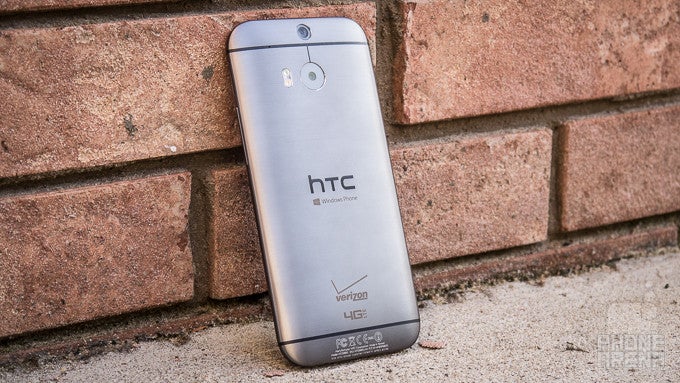
Introduction
Remember the days when HTC and Microsoft had a really close knit relationship, where Windows Mobile flourished thanks to HTC’s impeccable delivery with its line of smartphones? Arguably, the times have changed tremendously, as HTC has shifted its focus on its Android-powered smartphones.
At the beginning, when Microsoft’s new Windows Phone platform become a reality, HTC was there supporting the platform from the get-go – with some of its rivals doing the same. Through the course of the last year, however, HTC’s portfolio of Windows Phones has slowly dwindled, making us all wonder if they decided to give up on the platform entirely.
Fortunately, the long streak is over, seeing that the HTC One M8 for Windows is here in all of its glory – giving us a high-end, premium smartphone. Generally speaking, Windows Phones of late consisted of devices from Nokia’s Lumia line, so it’s refreshing to see something different from another company. Let’s find out if HTC can steal the spotlight once again!
The package contains:
- microUSB cable
- Wall charger
- Stereo headphones
- Product safety & warranty information
- Getting to know your phone guide
Design
Its design is identical to its Android-powered sibling, but as far as Windows Phone is concerned, it’s a refreshing change from the usual stuff we see from Nokia’s Lumia line.
Refreshing to say the least, especially when the majority of recent Windows Phones have come from Nokia, the HTC One M8 for Windows is indeed a very different looking thing in the Windows Phone landscape. Truthfully, though, it’s technically not a new design because it’s an exact facsimile to the Android-powered HTC One M8, which has been around for a good time now.
On one hand, we dig the premium construction, one that’s made from quality brushed aluminum, but we would’ve loved to see something else new – more so when HTC’s Window Mobile smartphones were known for their original, industrial designs. Nevertheless, we can’t complain either because the M8 by itself, continues to be one attractive looking thing in the space. And that’s despite knowing that the Android powered version has been out since March.
As we’ve detailed, the HTC One M8 for Windows sports the same design as its Android sibling. Therefore, it features the same iconic things – like its dual front-firing speakers with BoomSound, IR blaster, and duo camera system. For now, it’s only available in gunmetal grey, which is a shame because the Android powered one is offered in a palette of colors.
Display
No surprises here folks, this is the same screen we’ve seen before. Aside from a few subtle things, it’s identical in quality to its sibling’s display.
Not surprisingly, HTC didn’t mess around with the recipe it used for the Android-powered HTC One M8’s display – so the results are pretty much identical here with this 5-inch 1080 x 1920 Super LCD-3 display with Gorilla Glass 3. Knowing that, this specific panel exhibits the same lovable qualities that make it a darling to look at.
Specifically, they include its sharp details, vibrant color reproduction, and crisp viewing angles. However, there are a few minor differences that slightly favor this new screen – like its stronger brightness output of 510 nits and color temperature of ~7100 K. Beyond that, they match each other in pretty much all aspects!
Interface and Functionality
In addition to the uniform Windows Phone 8.1 experience, HTC throws in some of its own branded apps, which slightly enhances the experience, but not enough to catapult it over the stuff we’ve seen from Nokia.
Most folks probably might overlook it, but this is HTC’s fist smartphone to run Windows Phone 8.1, which sees several new enhancements and features to rival the same level of functional depth offered by rival platforms. For example, we have Microsoft’s digital voice assistant service Cortana, a new notifications panel that populates all of our notifications in one place, and even more customizations with the Start screen. We won’t go into detail regarding everything, since Windows Phone follows a uniform approach between devices, but HTC manages to throw in a few exclusives.
In the past, Windows Phones from HTC featured the HTC Hub, which was a dedicated app that brought the familiar look of its Sense UI. With this latest offering, similarly, HTC follows the same approach by throwing in a few staple features of Sense 6.0 that we’ve experienced before on the Android-powered M8. In particular, they include HTC BlinkFeed, HTC Camera, HTC Photo Edit, and HTC Sense TV. Obviously, they have to take the approach of offering these experiences in the form of dedicated apps, as opposed to being baked-in to the platform, since they need to adhere to the strict guidelines of Microsoft’s platform.
Comparatively, they provide the same functions as their Android counterparts, but in a way, we’re not too inclined to use some of them as frequently – such as BlinkFeed, because Windows Phone has its own social networking aggregation tool. In addition, we also have support for the HTC Dot View case and Motion Launch gestures, but they don’t offer the same depth as their counterparts on Android. Overall, the added HTC apps are nice, but it’s blatantly obvious that HTC didn’t do a whole lot of work in making them all that unique and different.
Processor and Memory
Just like other high-end Windows Phones, this one doesn’t have any shortages with its performance. It’s just snappy!
Armed with the same quad-core 2.3GHz Qualcomm Snapdragon 801 SoC coupled with 2GB of RAM, it’s not shocking that it exhibits the same snappy performance. From basic to intensive tasks, the phone is powerful enough to handle everything we throw at it.
Boasting 32GB of internal storage, it’s more than spacious for the most demanding multimedia buff – plus, it can be supplemented thanks to its microSD card slot. However, it’s still a pain to access because it requires that pin-hole sized tool to open.
Internet and Connectivity
Hardly one to disappoint, the HTC One M8 for Windows was made for surfing the web in full fidelity. Not only do we get lightning fast page loads courtesy of its 4G xLTE speeds, but the experience through Internet Explorer is strengthened thanks to its quick page rendering, smooth navigational controls, and detailed display.
Yes, this phone is primarily meant to play nicely with Verizon’s CDMA network domestically, but it’s able to roam around the world thanks to its GSM radio. Just as before, it also packs connectivity features such as aGPS with Glonass, Bluetooth 4.0, dual-band 802.11 a/b/g/n Wi-Fi, NFC, DLNA, and infrared.
Camera
HTC’s duo camera system is present here, giving us some cool post focusing effects, but its overall quality doesn’t differ whatsoever.
Yeah, we know it’s sporting the same gear from before – a 4-megapixel 1/3” sensor dubbed the “UltraPixel camera,” which features a dual-LED flash, 1080p video recording, BSI, and f/2.0 aperture lens. Of course, there’s a second rear camera as well that’s there to simply gather depth information for its cool focus effects, as well as a wide-angle 5-megapixel front-facing camera. And finally, it also packs along the same HTC Sense camera interface, but it doesn’t match the same number of effects as its Android sibling.
Quite frankly, we didn’t expect anything different with the camera’s quality – just because it’s using the same hardware as before. After snapping a few photos, it becomes instantly clear that are no drastic differences with its quality. For what it’s worth, it takes some good looking photos. Are they better than the other handful of flagships out there? No, but its quality is still nonetheless effective enough to make us happy. Sure, it’s lacking in the details department, but its various uFocus effects sprinkle that professional look to our shots.
At the same time, the camera’s 1080p video recording quality doesn’t differ. By the looks of it all, its quality in general is pleasing to the eye, as long as there’s sufficient lighting around. By default, the phone has its focus locked when recording, which means that adjusting is done via touch focus. Turning it off, though, the camera is constantly adjusting the focus on the fly. Frankly, it’s a nice option, but it seems a bit too sensitive – causing certain situations to become out of focus.

Multimedia
Fitting for all sorts of multimedia functions, we’re really excited to find a Windows Phone with a built-in IR blaster.
Considering that Nokia offers its Nokia Music app on its phones, we were hoping to see some sort of similar customization with the music player for the HTC One M8 for Windows. Unfortunately, there’s none of that here, since we’re only given the stock music player. Thanks to its dual front-firing speakers with HTC BoomSound, it impresses us with its powerful tones – though, it seems as though its output is a smidgen less than its Android sibling.
With all the ingredients for a proper video watching experience, the phone is essentially perfect for the occasion. From its vibrant screen to its stereo speakers, it definitely delivers the goods in this particular area.
Interestingly enough, an IR blaster makes its appearance on a Windows Phone. Although it’s not a rare occurrence amongst Android smartphones, it’s undoubtedly the opposite for Windows Phone – so we’re pleased to know that it’s here. Basically, with the aid of the HTC Sense TV app, the phone is transformed into a universal remote.
Call Quality
With its signature speakers, conversations are easily conducted due to its powerful output.
As the earpiece is actually one of the stereo speakers, it really lends some help in the calling quality performance of the phone. Not only are voices exquisitely loud and commanding, but they’re for the most part clear and noise-free – making it very easy to hear our callers in extremely noisy environments. Lucky for us, that’s also the case switching it to speakerphone mode, where its dual front-firing speakers deliver a potent mixture of power and clarity. Lastly, our callers also benefit by being greeted to voices on their end of the line that are robust and lively.
Battery
Same battery capacity, same results – so its performance is better than average.
Going with the same sized battery as before, a spacious 2600 mAh capacity one, it’s enough to easily get us through a solid one-day with no worries about being at a critical level before bedtime. Indeed, there’s a “battery saver” mode that’s available if you’re concerned, but it doesn’t see the same level of strictness that we find with the Android-powered M8’s “extreme power saving mode.”
Conclusion
Getting down to business, there’s no arguing that HTC is once again in the game of making Windows Phone smartphones. After a lengthy wait since its last offering, we’re relieved to see that they’re able to deliver a polished, high-end phone that’s competitive in the space. However, there’s still a part of us that wishes for something original – rather than just taking the original flagship, and swapping out the software for Windows Phone 8.1. You can say that it’s a lazy approach, but nevertheless, it’s just nice to see them in the game again.
Sporting a promotional price point of $99.99 out of the gate, it’s absolutely relieving to find this “new” phone being competitive. Despite the aggressive approach, we have to point out that a formidable option, the Nokia Lumia Icon, is available for free through Verizon – so that’s something to think about. On top of that, we also have to mention other elites in the Windows Phone space, like the Lumia 930 and 1520, which have proven to be fully-equipped offerings.
All in all, the HTC One M8 for Windows reestablishes HTC as a premier force in the Windows Phone landscape, one that’s been dominated by Nokia of course. For all of its prowess, it just doesn’t feel “new” enough to give it a leg up over the existing competition. Specifically, its camera quality just can’t compare to the stuff that Nokia’s PureView cameras on its high-end Windows Phones are capable of producing. Stick with it if you’re in love with its design! If not, you ought to think about some of the aforementioned models as an alternative.
Software version of the review unit:
Software: Windows Phone 8.1 update
OS Version: 8.10.14141.167

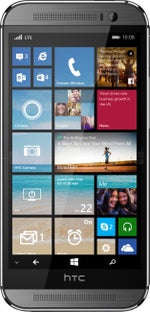

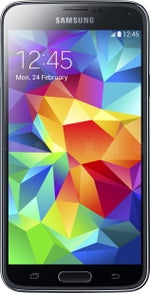
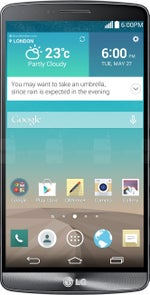





















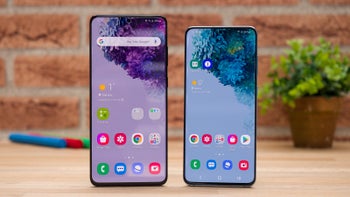






Things that are NOT allowed: